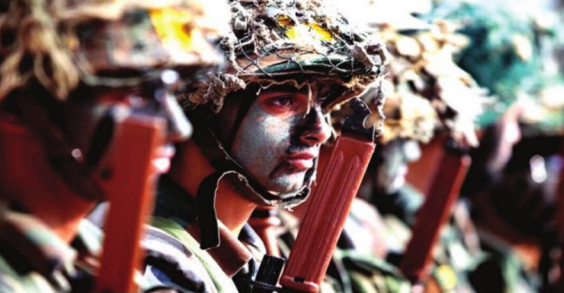The non-nomination of a Chief of Defence Staff for almost 10 months suggests an intentional delay in uniting the forces under one head. It is difficult to believe that the government has been unable to find a suitable replacement. The reason is that the government seems now to want a division of services rather than integration under a CDS. I had written a month ago, when force reduction was announced, that the forces should expect additional policy amendments from the government.
Agnipath was the first, manpower reduction second, shifting army and air force day parades from Delhi the third while the latest is discarding historical ties, customs and traditions. Agnipath was based on the premise that finances dominate national security, other issues, including training, experience and regimental spirit being tertiary. The forces were compelled to toe the line and senior officers directed to sell the scheme across all platforms. If Agnipath was truly a gamechanger, then there would have been no requirement for theatrics.
Manpower reduction was bulldozed by not recruiting for two years on the pretext of Covid and subsequently recruiting fewer numbers than retirees each year. The forces are compelled to rejuggle structures to manage manpower. Moving army and air force day parades away from Delhi was done on the pretext of wider viewership.
The Delhi army day parade is a dress rehearsal for the Republic Day. Moving it away implies additional expenditure, funds which could well be utilized in a more constructive manner. Agnipath and the latest directions on Indianisation are jointly aimed at breaking the regimentation system of the army.
The impact from Agnipath would be visible in a decade or so as numbers currently joining battalions are low, while Indianisation, under the pretext of freeing Indian forces from the ‘shackles of colonialism’ will ensure that all bonds with regimental history and traditions are terminated. The Prime Minister had set the ball rolling for this change, while addressing the combined commanders’ conference in March 2021, in Kevadia, Gujarat.
He desired that the forces, “rid themselves of legacy systems and practices that have outlived their utility and relevance.” The army in its press note on the subject stated, “while doing away with the British colonial legacy, it is essential to move away from archaic and ineffective practices,” echoing the PM’s thoughts.
The document added, “Some of the legacies/practices which require a review are customs and traditions from the colonial and pre-colonial era, army uniforms and accoutrements, regulations, laws, rules, policies, unit establishment, institutes of colonial past, English names of some units, renaming of buildings, establishments, roads, parks etc.” While some customs and practices may necessitate an amendment, not those linked to valour.
As with Agnipath, all proposed amendments will likely be presented for approval by PM Modi. The final decision has probably been taken and the army will continue being pushed till they toe the line. It will then be displayed as being the army’s idea. A few aspects must be considered by those pushing for recasting army traditions and culture. Indian history does not commence post 1947. The Indian soldier has performed creditably against any adversary whenever and wherever he was deployed.
Honours, awards and accoutrements presented to Indian regiments is testimony of their valour and dogged determination to succeed, despite all odds. The erstwhile memorial at India Gate was built to honour the valour of the unknown Indian solider in both the great wars as also the Afghan war. Most regiments won battle honours after immense sacrifice.
By moving the eternal flame from India Gate to the National war memorial, the valour of Indian soldiers in earlier wars cannot be wished away as belonging to the colonial era. In armed forces across the globe, history, traditions, dress and accoutrements play a motivating role.
These have been earned by the blood, sweat and tears of those who then served in these organisations. They motivate those currently serving. Pomp and show are a part of military tradition globally as armed forces are different from all other state organizations. It is this pomp and show which attracts youth into its fold. Changes must be viewed in this light. Indianisation of the forces should only involve modifying or altering those few customs and traditions which go against Indian ethos.
These could include elaborate mess dresses and events. However, Indianisation does not imply a radical change from our historical past as also discarding all that was earned by the sacrifice of those who wore the uniform in that era. The history of regiments cannot be altered by discarding their linkage with history.
Name changing has become a national pastime. If the intent is to break all ties with our colonial past, then the government should announce its walking away from the Commonwealth. India still possesses a collection of archaic British laws which are more essential to discard than changing service customs and traditions. While the government refuses to amend colonial legacies and laws from its side, it seeks to project its anti-colonial stance through the armed forces only to gain publicity.
Changes which impact tradition, culture, heritage flowing from valour and sacrifice should be considered after discussion with veterans who nurtured these regiments for decades, not political authority with no clue of military ethos. The old naval adage of “it takes three years to build a ship, 30 years to develop a fleet and centuries to make a tradition,” should never be forgotten. Changing traditions requires consideration and understanding and must never be done on whims and fancies











